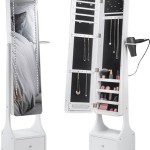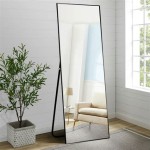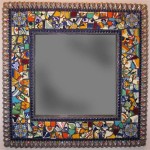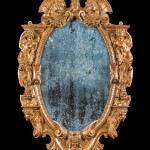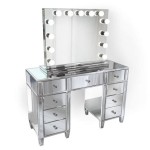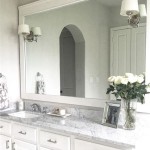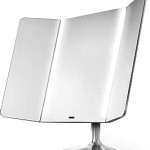How To Frame A Mirror With Pallet Wood
Framing a mirror with pallet wood offers a cost-effective and aesthetically pleasing way to add a rustic touch to any living space. This project can be completed with readily available tools and materials, making it suitable for both novice and experienced DIY enthusiasts. This article provides a comprehensive guide on how to construct a pallet wood mirror frame.
Gathering Materials and Tools: The first step involves assembling the necessary materials and tools. The primary material is reclaimed pallet wood. The quantity depends on the mirror's dimensions and the desired frame width. Other essential materials include wood glue, wood screws, finishing nails, sandpaper (various grits), a measuring tape, a saw (circular saw, miter saw, or hand saw), a hammer, a drill with appropriate drill bits, safety glasses, work gloves, and a wood stain or paint (optional).
Preparing the Pallet Wood: Pallet wood often requires preparation before use. Start by carefully dismantling the pallet using a pry bar and hammer, avoiding damage to the wood. Once disassembled, inspect the boards for protruding nails or staples and remove them. Clean the wood using a brush, removing any dirt or debris.
Cutting the Wood: Accurate measurement and cutting are crucial for a well-fitted frame. Measure the mirror's dimensions and determine the desired frame width. Add twice the frame width to each mirror dimension to determine the length of each frame piece. For example, for a 20x30 inch mirror and a 4-inch frame, the frame pieces would be 28 and 38 inches respectively. Cut the pallet wood to the calculated lengths using a saw, ensuring 45-degree angles at the ends for mitered joints. A miter saw is recommended for precise angle cuts.
Assembling the Frame: Dry-fit the cut pieces around the mirror to confirm proper fit and adjust angles as needed. Once satisfied with the fit, apply wood glue to the mitered edges and join the pieces together to form the frame. Secure the joints with finishing nails driven into the wood at an angle. Clamp the frame and allow the glue to dry completely according to the manufacturer's instructions.
Reinforcing the Frame (Optional): For added stability, particularly with larger mirrors, reinforcing the frame is recommended. Small L-brackets can be attached to the inside corners of the frame using wood screws. This provides additional structural support and helps prevent the frame from warping over time.
Sanding and Finishing: Once the glue has dried, sand the frame using progressively finer grits of sandpaper, starting with a coarser grit (e.g., 80-grit) to remove any imperfections and smooth the surface. Continue with medium grit (e.g., 120-grit) and then fine grit (e.g., 220-grit) for a smooth finish. Remove sanding dust with a tack cloth or brush.
Applying Stain or Paint (Optional): Depending on the desired aesthetic, the frame can be left natural or finished with a stain or paint. If applying a stain, follow the manufacturer's instructions carefully. Ensure even application and allow adequate drying time between coats. If using paint, apply a primer before the paint for better adhesion and coverage. Multiple thin coats are generally recommended for both stain and paint.
Attaching the Mirror: Different methods can be used to secure the mirror to the frame. Mirror clips, adhesive, or a backing board can be utilized. If using mirror clips, attach them to the inside of the frame at regular intervals. For adhesive, apply it to the back of the mirror and carefully place it within the frame. A backing board provides additional support and can be attached to the back of the frame using screws. The mirror can then be secured to the backing board.
Hanging the Mirror: Attach appropriate hanging hardware to the back of the frame, such as D-rings or wire. Consider the weight of the mirror and frame when choosing hardware. Ensure the hardware is securely attached to the frame to prevent the mirror from falling.
Safety Precautions: When working with power tools, always wear appropriate safety gear, including safety glasses and work gloves. Exercise caution when dismantling pallets and handling reclaimed wood. Follow the manufacturer's instructions for all materials and tools used in the project.

Rachel Schultz Framing A Bathroom Mirror With Pallets

Diy Rustic Farmhouse Pallet Wood Round Mirror

Rachel Schultz Framing A Bathroom Mirror With Pallets

Rachel Schultz Framing A Bathroom Mirror With Pallets

Pin By Ds On Frames Pallet Mirror Frame Wood Framed

Rachel Schultz Framing A Bathroom Mirror With Pallets

Pallet Bathroom Mirror Shelf Diy 101 Pallets

Pallet Wood Mirror Makeover Knockoffdecor Com

Rustic Mirror Frame Out Of Pallets Pallet Furniture Diy Mirrors Frames

Diy Pallet Bathroom Vanity And Mirror Pallets Pro

